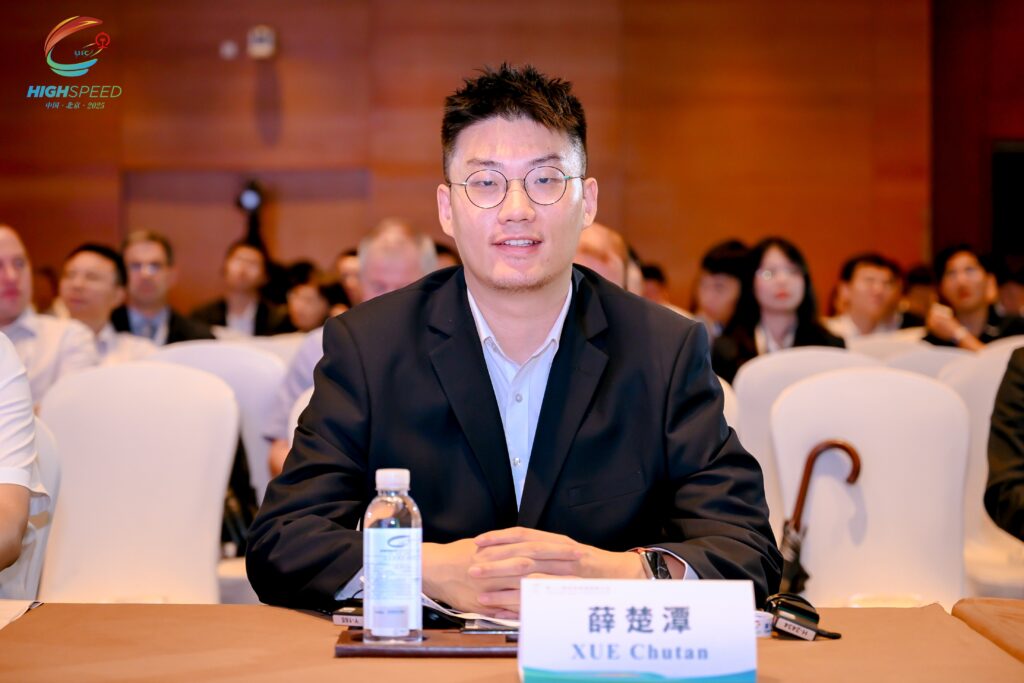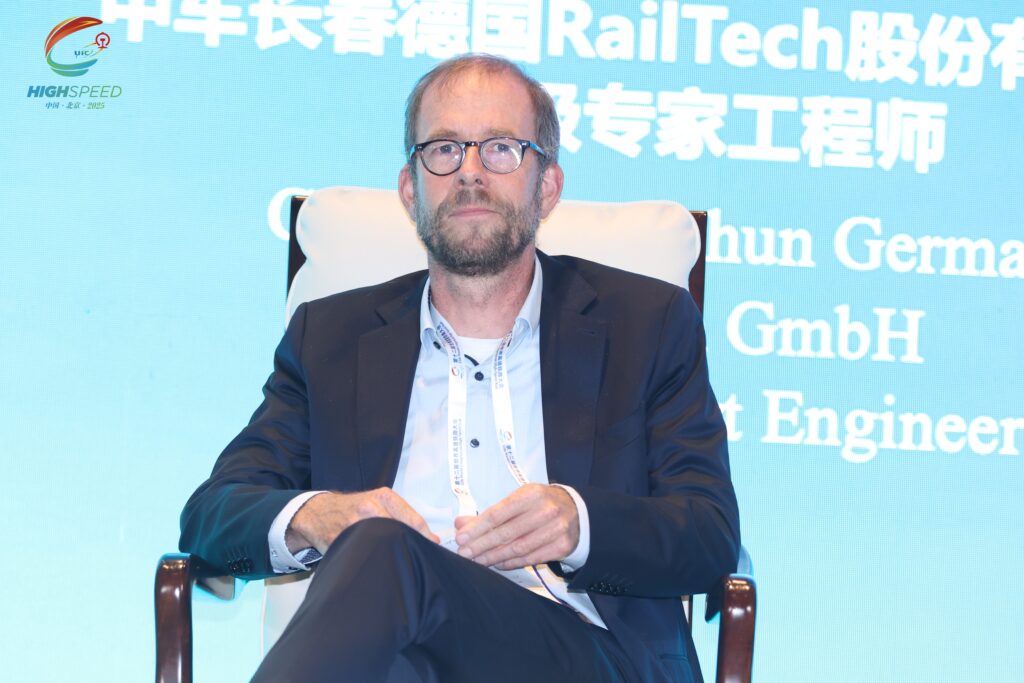

Two technical contributions highlight our simulation expertise in ultra-high-speed train aerodynamics and AI-assisted structural analysis
In July 2025 our company was proud to contribute to the 12th UIC World Congress on High-Speed Rail, held in Beijing and organized by the International Union of Railways (UIC). As the world’s premier platform for high-speed rail technology, operations, and policy exchange, the congress brought together railway operators, manufacturers, research institutions, and government bodies from across the globe.Two of our engineers were invited to present their latest research findings at the event:
“Pressure Wave Characteristics of a 600 km/h Maglev Train in Tunnel Entry”
Presented by Chutan Xue, this study employed unsteady CFD simulations to analyze the pressure wave behavior of an ultra-high-speed maglev train entering a tunnel. The results revealed stronger and steeper pressure fronts compared to conventional high-speed trains, with U-shaped tunnel geometries shown to amplify pressure fluctuations. The presentation sparked active discussion around tunnel design standards and maglev-specific aerodynamic adaptation.
“Using Machine Learning for In-Service Load Reconstruction Based on Physics-Based Data”
Presented by Dr.Hauke Schmidt, This second contribution introduced a supervised learning approach for reconstructing operating loads in high-speed rail vehicles based on strain and acceleration data. The method, which leverages synthetic finite element datasets, demonstrated improved robustness and accuracy over traditional signal-based techniques. The talk attracted attention from participants exploring AI integration in structural health monitoring and digital twin systems.
Both presentations underscored our company’s active role in cutting-edge simulation, from high-speed train aerodynamics to data-driven load modeling. The visibility at UIC 2025 reinforces our commitment to international collaboration and innovation in next-generation rail technology.
